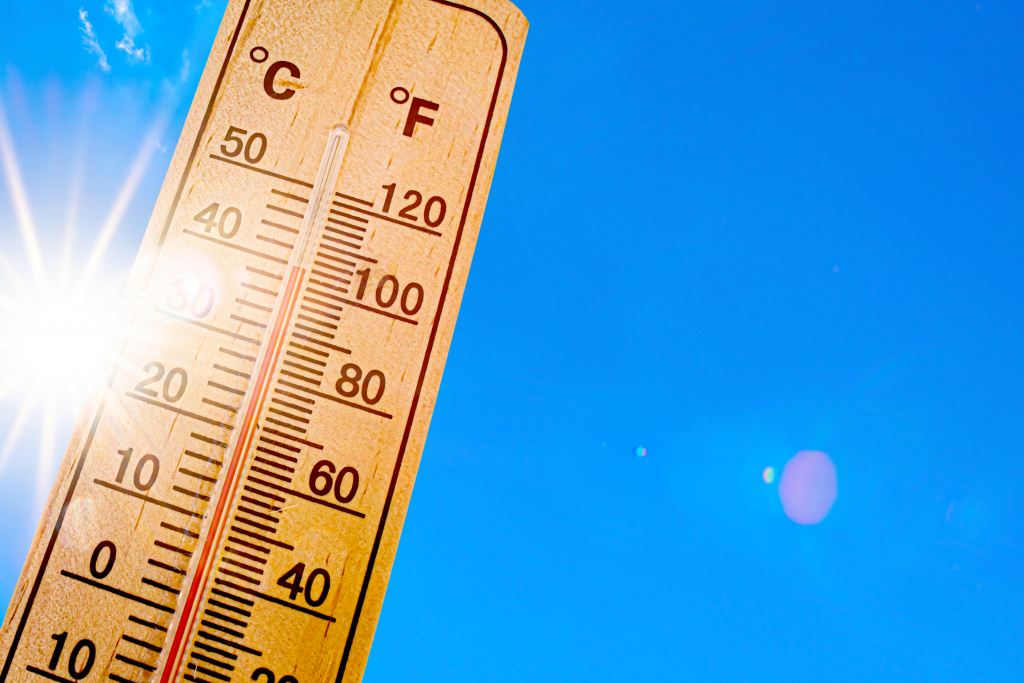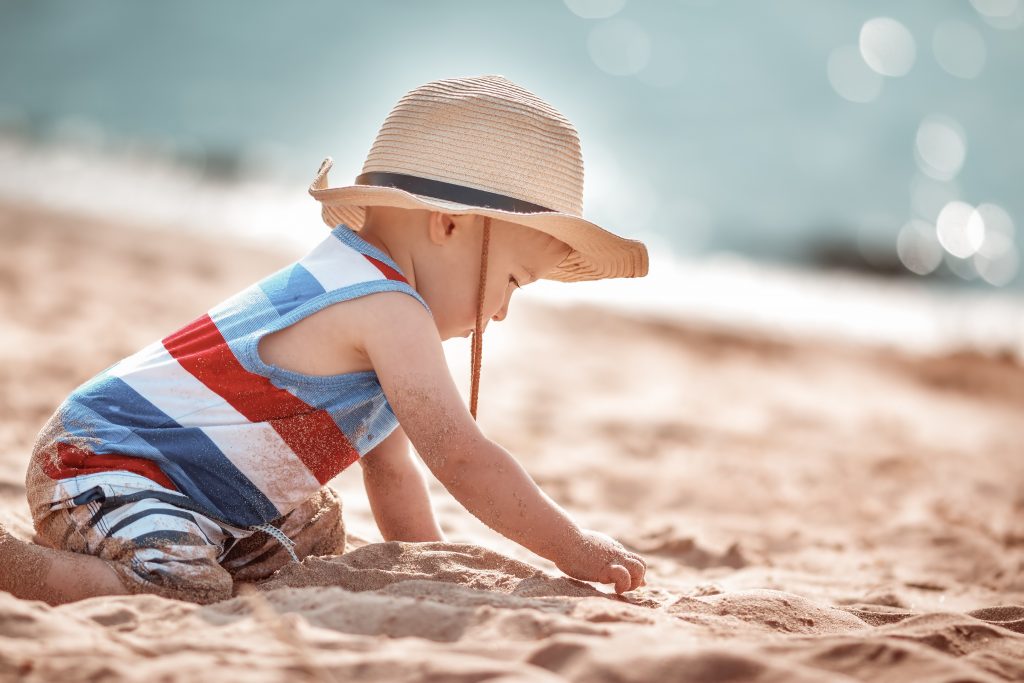Summer temperatures can burn, dehydrate and even be fatal.
Protect little ones from the sun.
PSA Video from American Academy of Pediatrics
A child left in a hot car can die of heatstroke very quickly. In this Public Service Announcement, Dr. Shelly Flais from the American Academy of Pediatrics offers advice on steps parents and caregivers can take to prevent a tragedy.
Safety in the Heat

High temperatures are especially dangerous for babies and toddlers.
Never leave children unattended in a vehicle, even with the windows open. Not only is it illegal in California to leave a child under 6 in a car, but it can be deadly in minutes.
Look before you lock. Think of a way to remind yourself to always check the back seat. For example, place your work ID, briefcase or purse in the backseat of the car so you must look there every time you park. Check out the media coverage we received about the importance of hot car safety for children.

Call 9-1-1 for help if you see a child trapped in a car. Stay with the child and car until help arrives.
Other resources:
Fact sheets, statistics and how to avoid child heat strokes from kidsandcars.org
Sun Safety

Babies and young children have delicate skin that is still maturing, and it can be easily damaged by the sun.
Unprotected or prolonged sun exposure can increase a child’s risk of skin cancer, burns and eye damage.
The best line of defense against harmful UV radiation is covering up. Stay in the shade whenever possible, and limit sun exposure between 10 a.m. and 4 p.m.
The American Academy of Pediatrics (AAP) recommends that babies under six months old be kept out of the sun entirely, if possible. Sunglasses that filter out UV are also important since the melanin in babies’ eyes is still forming.
Older babies and toddlers can handle some sun, but only if adequately protected. Once your child reaches six months, begin introducing a sunscreen with a SPF of at least 30. Get in the habit of dressing your toddlers in hats, sunglasses and lightweight clothing that covers as much skin as possible.
Remember that car rides can lead to unintended sun exposure. Consider buying a UV shield, which you can hang over any window to cut down on sunlight on your child’s car seat.
Other resources:
Information on sunscreen and sunburn treatment for young children by the AAP
Video: “Infant sun protection: How to keep your baby safe” from the American Academy of Dermatology
Hydrate!

Young children are more at risk for dehydration than adults because they have a higher surface area to body weight ratio.
Children can become dehydrated in as little as 30 minutes of play in hot weather.
Give children a cup of water before playtime and make sure they drink water frequently during their activity. Abstain from giving children sugary drinks instead of water. #ChooseWater
Toddlers and young children may not recognize their thirst or may not be able to communicate their need for water. Look for signs of dehydration such as dry mouth, sunken eyes, decreased or dark urine, fussiness or irritability, lethargy or fatigue, and a lack of tears when crying.
Other resources:
Signs of Dehydration in Infants & Children by the American Academy of Pediatrics (AAP)

